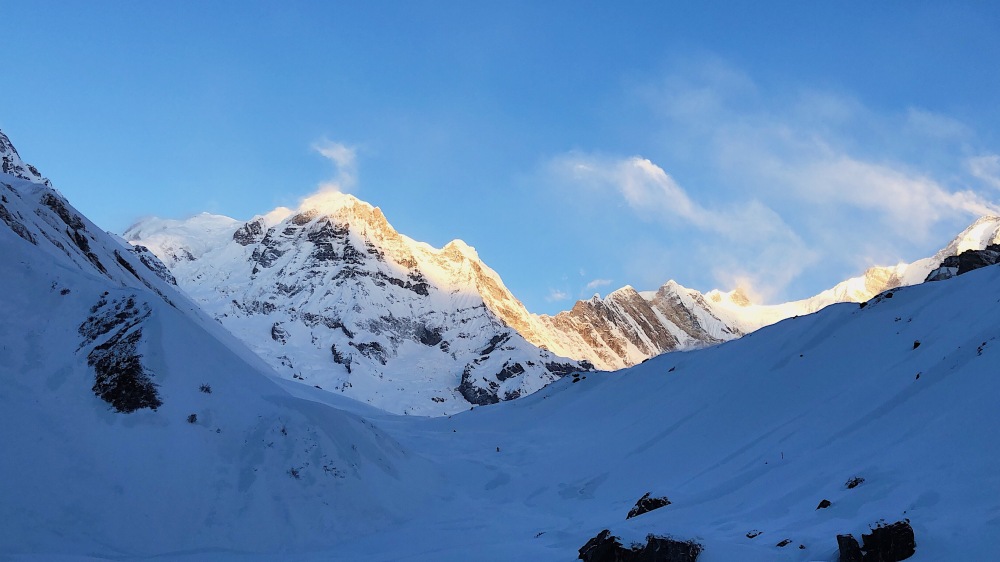
It was not a dream I was hurrying to catch, but all of a sudden I found myself in the foot of the highest mountain range in the world: the Himalayas. My goal of setting foot in the Himalayan soil and trekking one of its most popular trails has been achieved during my first time of visiting the country of Nepal, and for this I am so much grateful! But this trek in the Annapurna Base Camp, which is classified as grade two trekking, was the most exhausting adventure I’ve ever had so far. If ever you’re planning to go here, prepare yourself not only physically, but also mentally and spiritually. Extra pocket money won’t hurt, too. You’ll know the reasons why for these as you read along this travel guide.

Take note that the average altitude of the ABC trek is 3,900 to 4,800 m. While majority of this would require walking on trails that go up and down for a lot of times, the few trails leading to the Annapurna Base Camp itself were really quite a challenge. Starting from the small village called Himalaya, the trail going up wasn’t that as defined as before. Mud was already mixed with snow, so we had to be more careful while treading along. Then starting from the next village called Deurali, the trek was already covered with snow and from here on up to ABC, the level of difficulty has definitely increased.
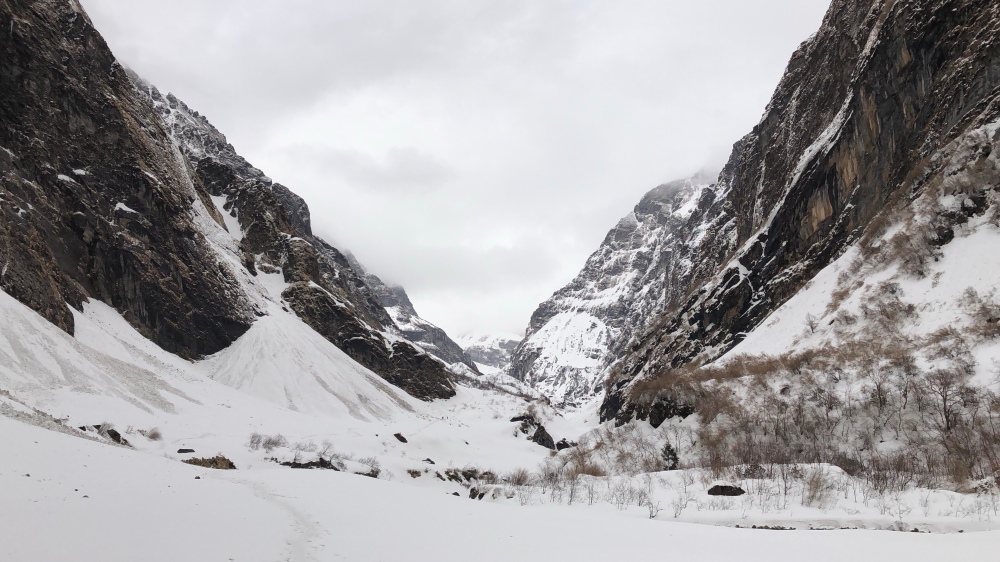
This whole trek may be difficult, but it doesn’t mean it cannot be done. IT CAN BE DONE! I’ve been hiking mountains in the Philippines for a few years now, but none that are classified as major climbs. Imagine that! From minor climbing in the country to this relentlessly tiring trek in the Himalayas! If I have done it, so can you. But you really have to prepare first before heading to this one-of-a-kind adventure. Let me help you with that with this travel guide to the Annapurna Base Camp, which is truly the kind of dream you’d want to write in your bucket list!
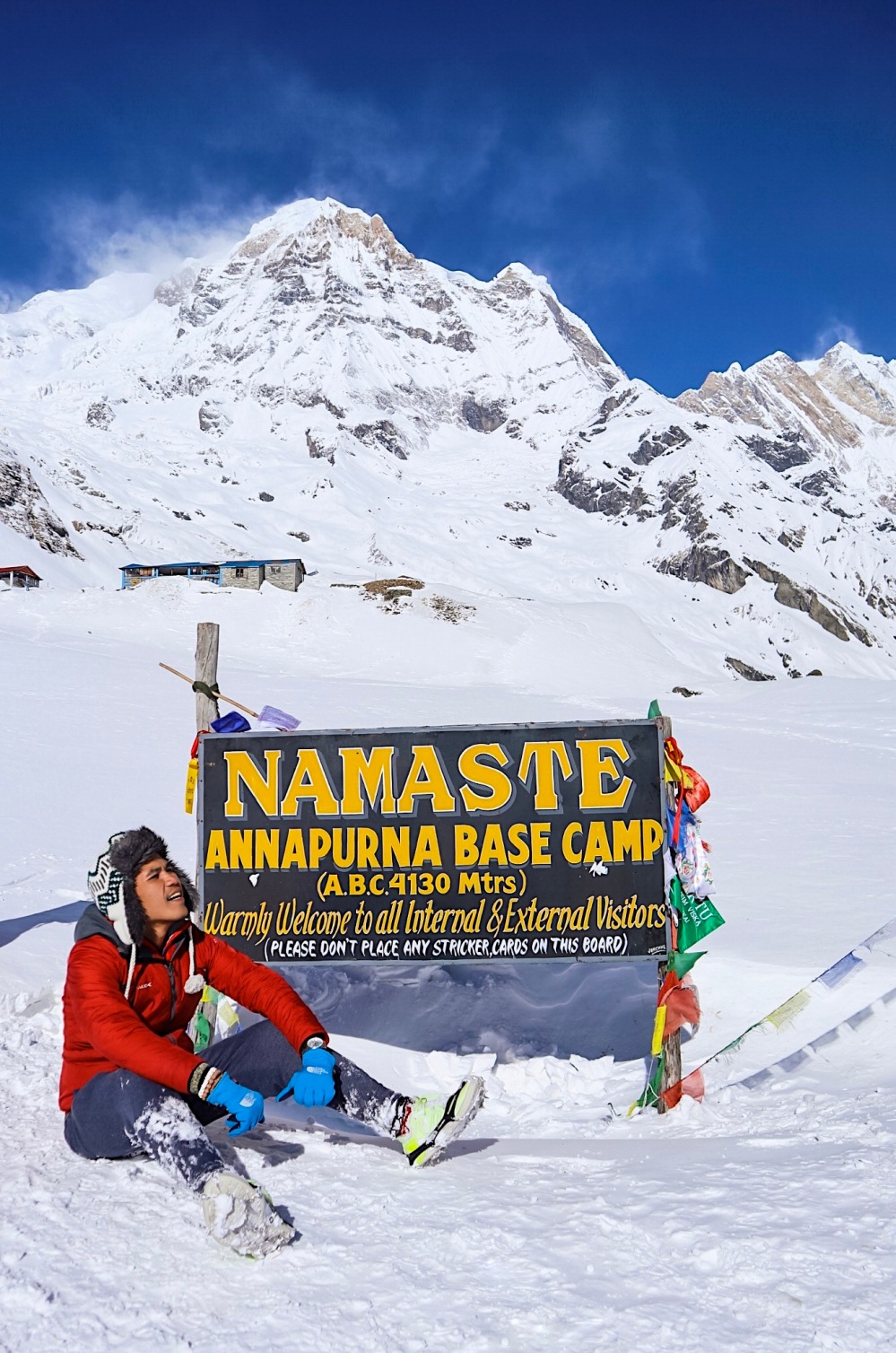
ANNAPURNA BASE CAMP
The Annapurna Base Camp is part of the protected area of the Annapurna Sanctuary, described to be a glacial basin up there in the Himalayan range. It is surrounded by some of the highest mountains in the world, including the Machapuchre (6.993 m), Annapurna I (8,091 m), Hiunchuli (6,441 m) and Annapurna III (7,555 m). Parts of the sanctuary are considered sacred by the Nepalese who live around the area. In fact, it was only in 1956 when outsiders were able to enter the sanctuary.
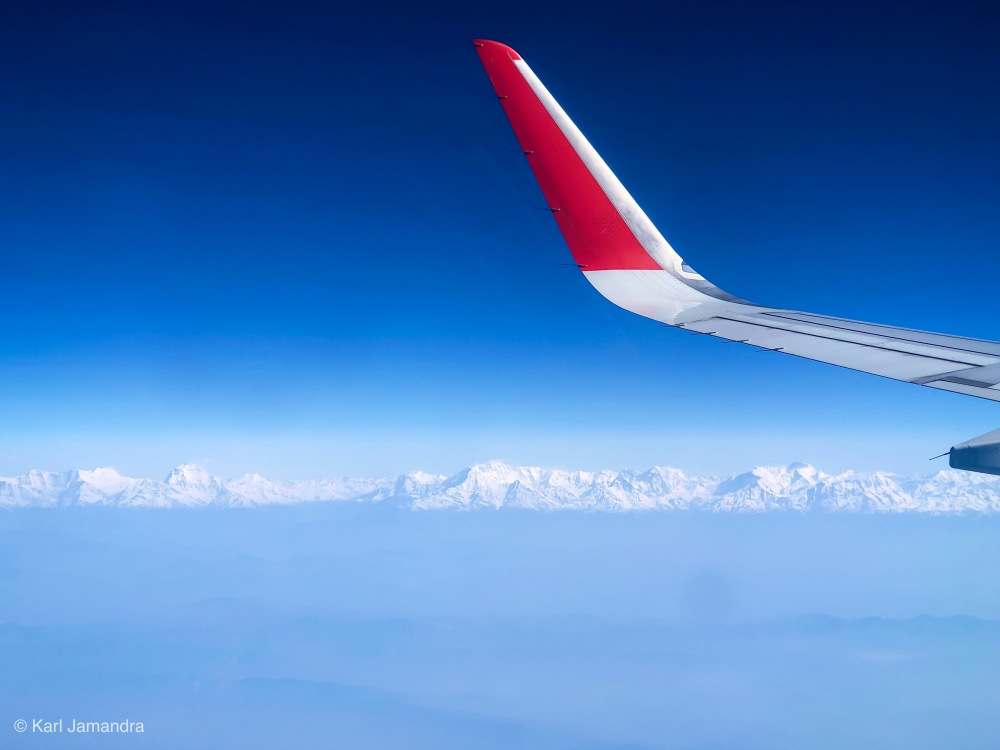
THE ANNAPURNA BASE CAMP TREK
From the Nepalese capital of Kathmandu, we had to travel to Pokhara, which is the base city of the ABC trek. While the whole ABC trek would take about 6 days, it would take 8 days or more if you’re going to count the number of days you have to be in Nepal in order to complete the whole Annapurna Base Camp trekking.
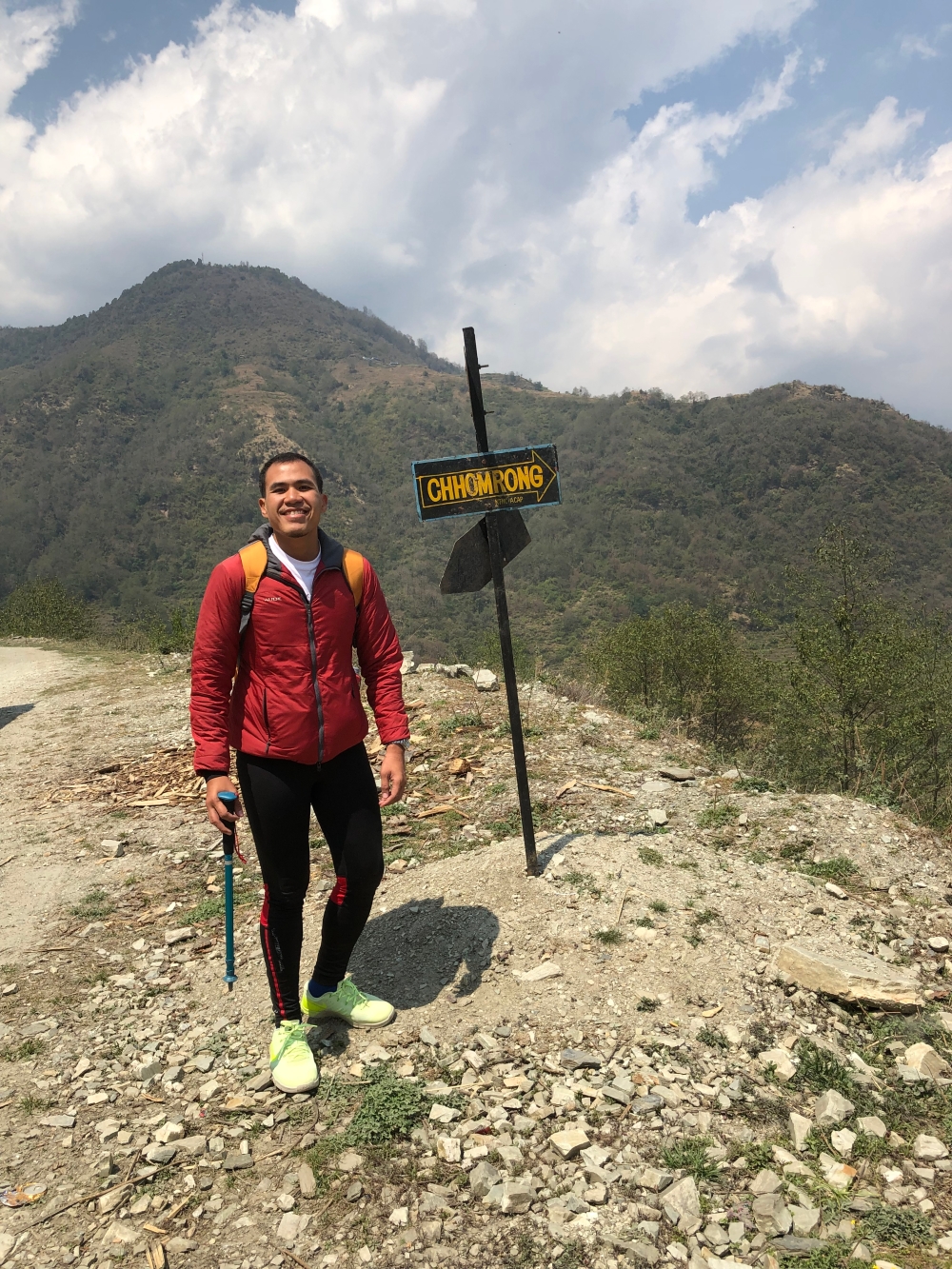
Once you arrive in the jump-off point of the ABC trek somewhere in Ghandruk, you’d be walking, hiking and trekking for 6 days until you get back. Of course, you get to rest in guesthouses or what they sometimes call “tea houses” in villages along the trail. Aside from providing shelter for the night, these places are also where you can eat meals and refill your water for your journey.
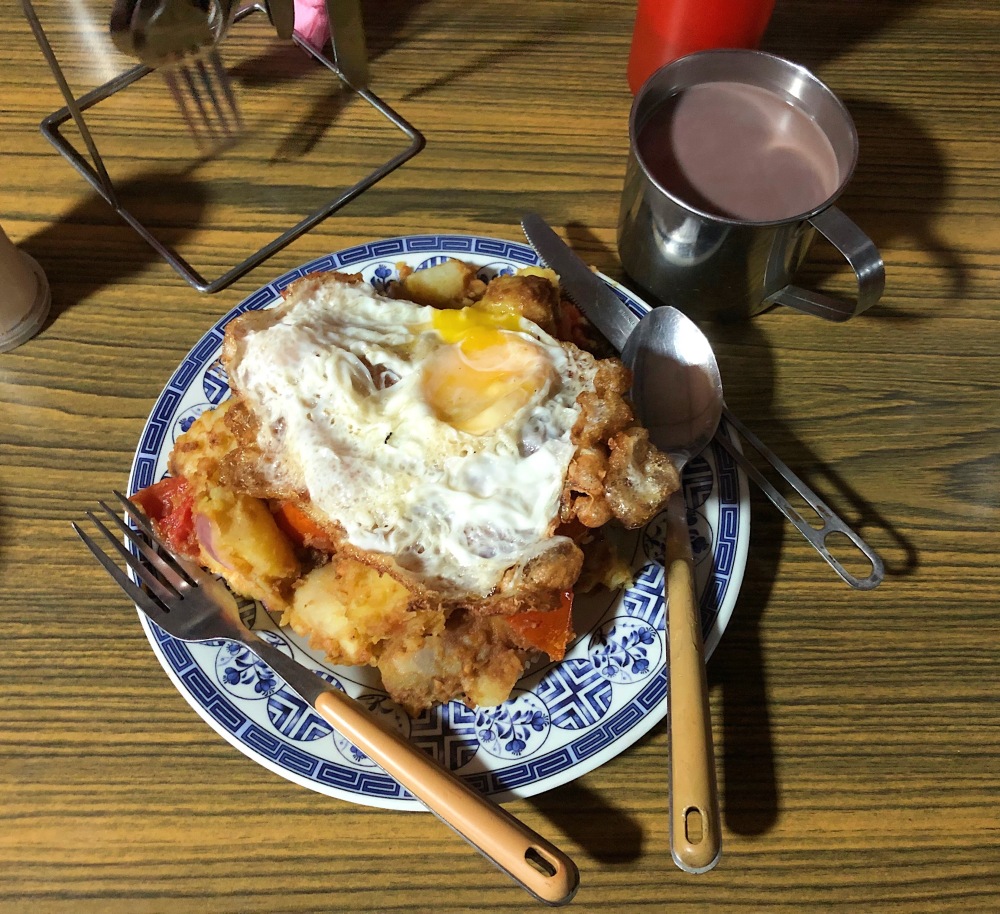
The whole journey can be challenging, but it provides some of the most picturesque views that you get to ever see in your whole life. Because of its unique combination of heights and depths, the Annapurna Sanctuary provides spectacular, varied scenery from sub-tropical meadows and mossy forests to snow-covered Himalayan mountains.
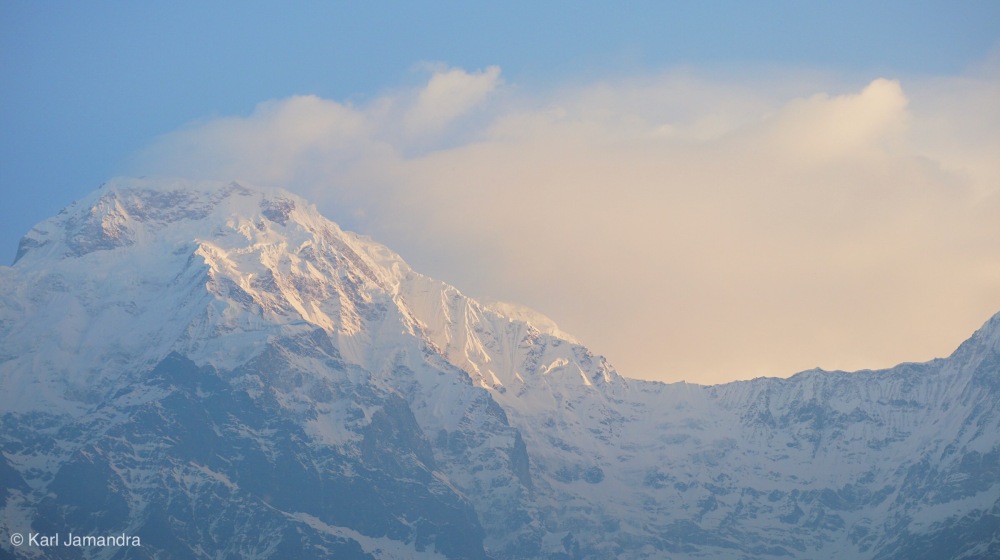
WHAT TO PREPARE BEFORE TREKKING THE ABC:
- First and foremost, you have to prepare your passport. Check if it is still valid, because if it’s 6 months before its expiry date, you won’t be allowed to travel overseas.
- Plan as to how you’ll be able to go to Nepal. There are no direct flights to Kathmandu coming from Manila, so you have to head first to Bangkok or Kuala Lumpur before flying to the capital of Nepal.
- Next, prepare your finances. Going to Kathmandu would require riding the airplane, and the airfare isn’t as cheap as flying locally. We got our tickets for about P7,000 going to and from Kathmandu, one way. Don’t fret, though. The accommodations in Kathmandu, Pokhara and the guesthouses along the ABC trail are relatively cheap. The food in the cities are relatively cheap, too, but as you go along the trek, you’d realize the prices of food go higher and higher. In Machhapuchre Base Camp, the last guesthouse before ABC, a bowl of noodle soup costs about 400 NPR, which is roughly equivalent to P200! For more budget info, head to the budget part of this travel guide.
- Nepal requires VISA, but this is issued once you get to arrive in the airport. Nepal VISA for Filipinos costs $40 (about P2,100). You’re just going to need your passport for this.
- Secure permits for the trek: TIMS (Trekkers’ Information and Management System) and entry permit from Annapurna Conservation Area Project (ACAP). As of March 2019, TIMS costs 2,000 NPR while entry permit from ACAP costs 3,000 NPR. You can get these permits in the Nepal Tourism Board offices either in Kathmandu or Pokhara.
- You have to prepare your body physically. While many people say amateurs can do this trek, I’d say they can as long as they’re absolutely prepared. If you have only several days to complete the trek (we completed ours in 6 days, which is just ideal for the circumstances we had), then you must really condition yourself for about 7 or more hours of trekking per day. If you’re not physically fit, the trek would require more time, which may mean more days of trekking.
- Develop mental fortitude. More than the physical fitness one should prepare for this trek, it’s the strength of the mind and the will to continue despite the hardships that would really get you through. There would come a time that you’d want to quit and question yourself why you are doing it. Tell yourself you are there for a good reason, and you just have to show it through your actions.
- Prepare your winter clothes like heat tech jackets and gloves, not for fashion purposes, but because it really gets so cold up there! Also, wear trekker pants that will enable you to move well while trekking. Re: shoes, wear a pair that are made for hiking or purchase or rent crampons in Kathmandu or Pokhara for these are helpful in the snow-covered parts of the trail. Bring shades to protect your eyes up there in the base camps, as well as cap to protect your face. Remember, the air in high altitudes is thinner, and the heat of the sun is more felt. For this reason, bring sun block as well!
- Pack lightly. Prepare and bring only the things you need in the trek. You can also ask the owner of your guesthouse or hotel in Pokhara (or even Kathmandu) if you can leave some of your belongings, which you would once you’re done with the trek.
- Keep the faith! There might come a time that you’d really feel exhausted after all the trekking and climbing up the slopes towards the base camp. But you gotta push through. More importantly, ask guidance from above.
- Revel in the journey, take pictures, leave no trace, carry your trash, and just enjoy the trek no matter what! Good luck!
THE 6-DAY TREK IN THE ANNAPURNA BASE CAMP
This is a condensed retelling of what we went through during our trek in the Annapurna Base Camp for six days. Remember, from Kathmandu, we had to travel to the city of Pokhara, which is the base city of the ABC trek.
where the You may want to read this especially if you want to feel what it was like doing the most exhausting journey I’ve ever experienced! Enjoy!
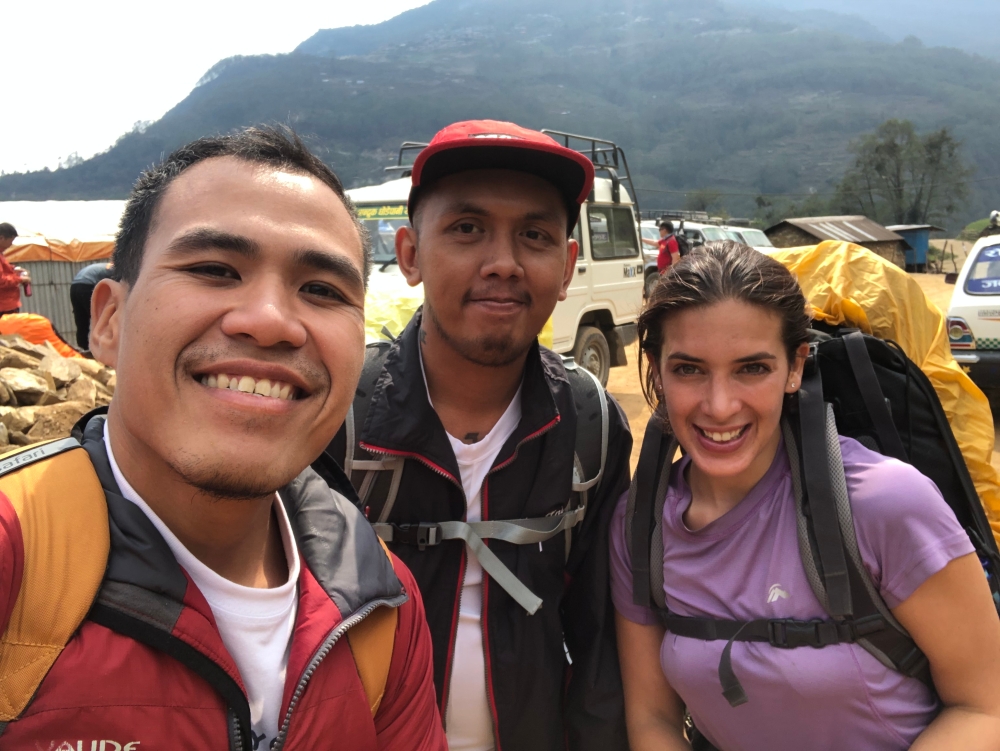
Day 1 (Pokhara – Matkyu – New Bridge – Jhinu – Chhomrong)
From our hostel in Pokhara, we rode a taxi going to the local bus terminal. We looked for the bus going to Ghandruk. As we still have time to spare when we reached the terminal, we ate breakfast in a nearby eatery. At 9 AM, our bus en route to Ghandruk left the terminal. Our original plan was to go down in Siwai, but it saved us a lot of time to start near Ghandruk. The bus unloaded us along the road towards Matkyu, serving as the jump-off point of our trail. We didn’t have a guide, but that was not a problem because the roads lead towards the trail towards the ABC trek. We walked for about 30 minutes towards the village called New Bridge, where we passed by a long hanging bridge, which I thought was Nepal’s longest. We then proceeded to Jhinu, which is popular for its hot springs. We did not stop to bathe in its hot springs due to lack of time, but we planned to stop by when going back. We trekked for another hour going to Chhomrong, which has a trail that went up, up and up, so brace yourself! We reached Chhomrong at around 5:30 PM. We stayed in one nice guesthouse in the village, which offered a great view of the mountains. It was a great start of our ABC journey!
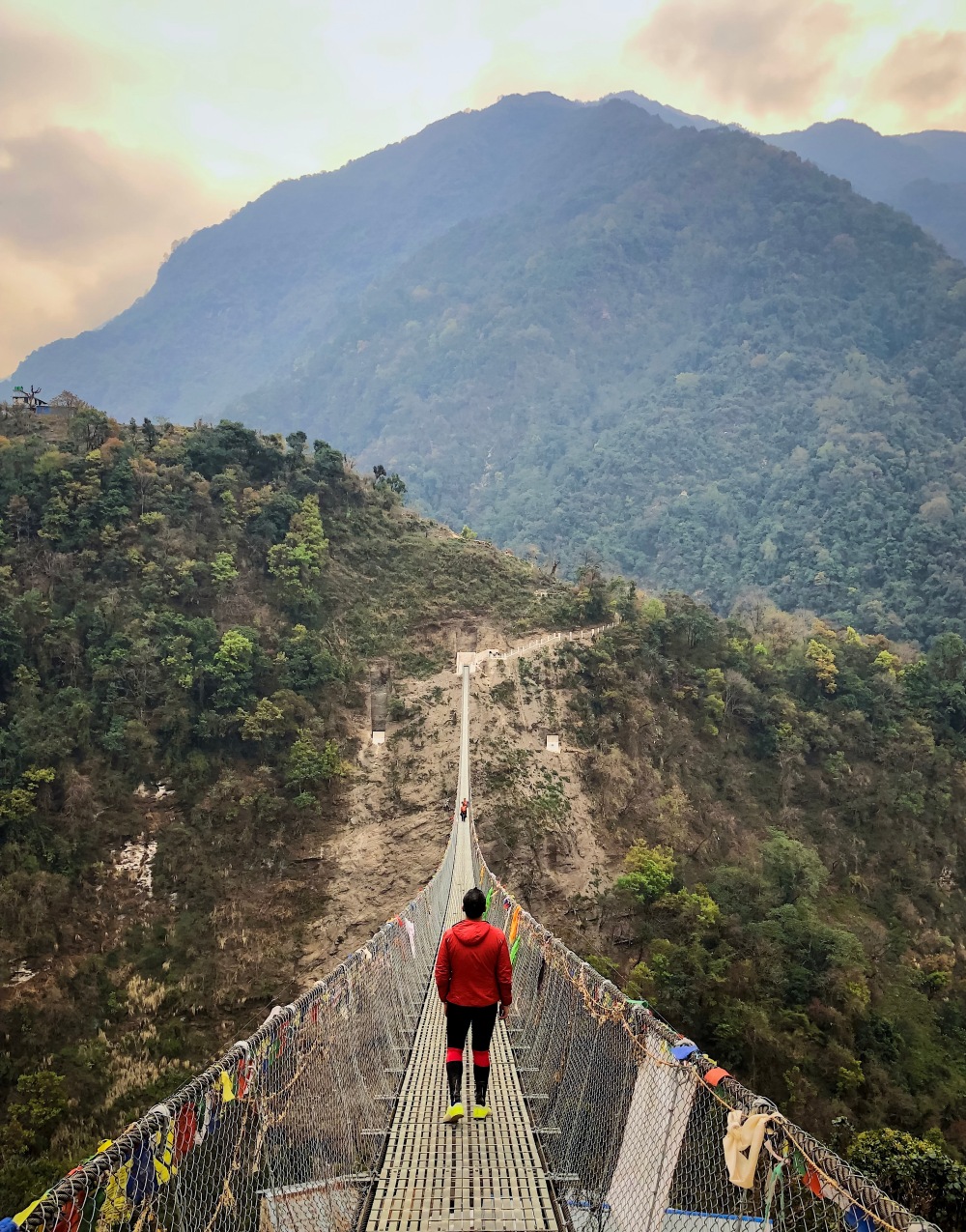
NOTE: I highly recommend for you to bring energy bars that you can munch on during the trail. As I have mentioned before, this trek can really be tiring, which means you need sources of energy to keep going. Also, don’t forget to refill your water containers because you would definitely need to drink along the way! Always get hydrated!
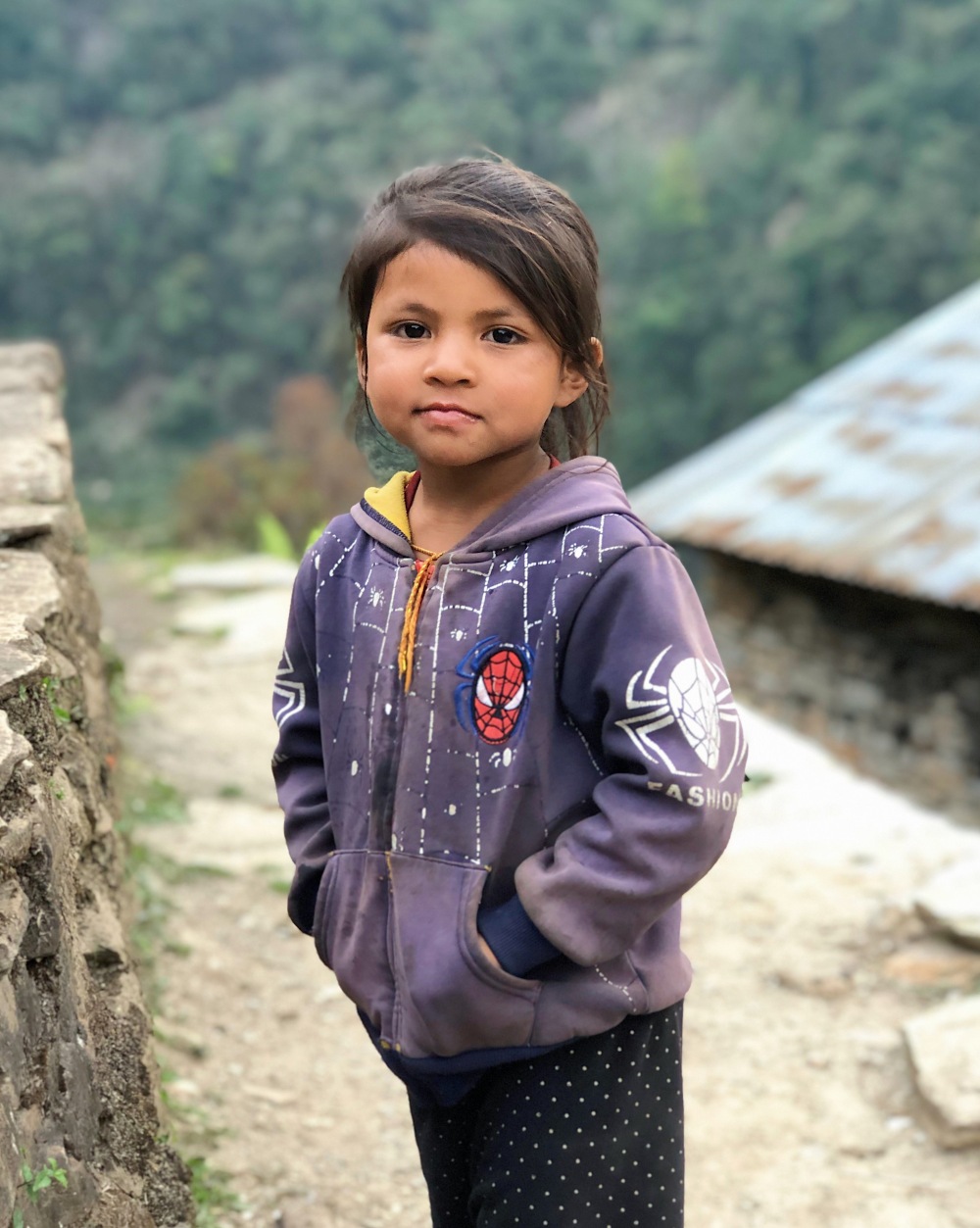
Day 2 (Chhomrong – Lower Sinuwa – Upper Sinuwa – Bamboo – Dovan – Himalaya)
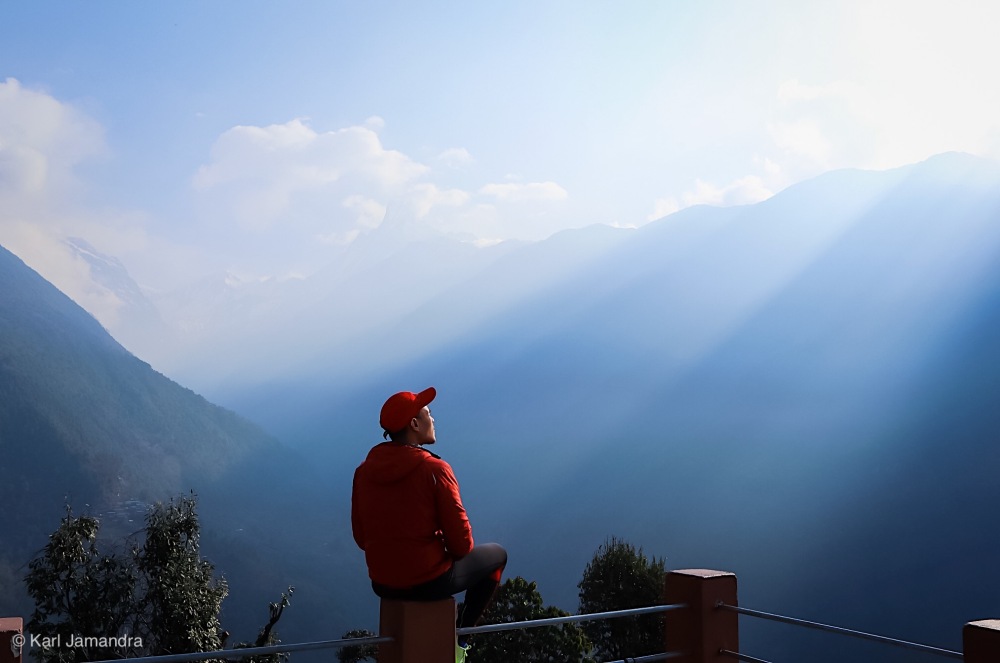
We woke up early to prepare because we have a lot to cover during the second day. After seeing the sunrise and eating breakfast, at around 8 AM, we then headed to Lower Sinuwa. Going to Lower Sinuwa was relatively easy, but going to Upper Sinuwa was not. A lot of going up and down were to be expected in this part of the trail. Going to Bamboo felt like smooth and easy, until it rained… ice!
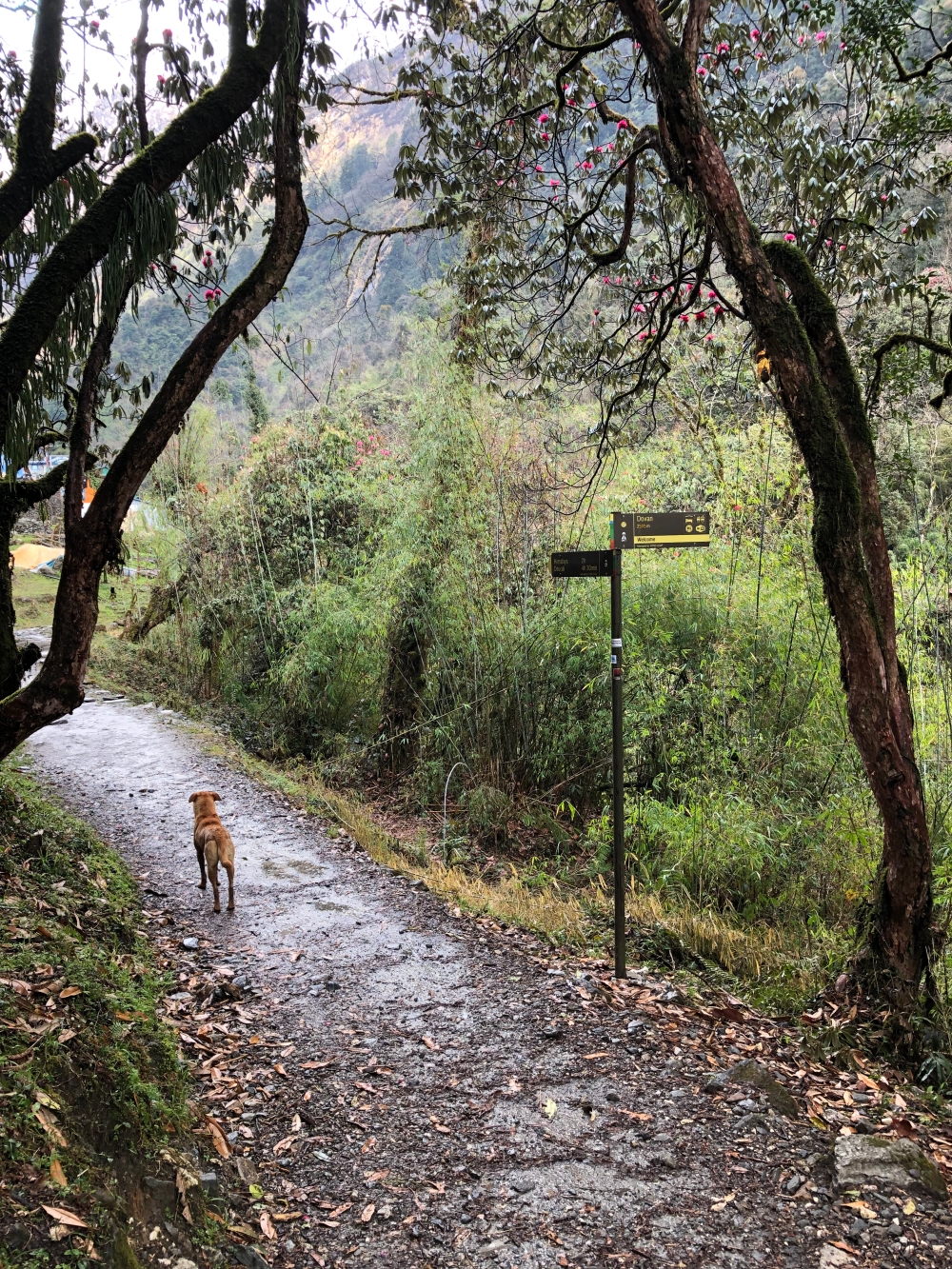
We ate our lunch in Bamboo and waited for the hail to weaken. We had to buy poncho, a sort of raincoat to protect us and our belongings from being wet while commencing with the trek. The hail eventually stopped, and the trek became relatively easy again. The journey towards Dovan and Himalaya felt like going along the trails I encounter back in the Philippines. Mossy forest welcomed us in this part of the trek. I, as the one leading in our group of us three, have finally reached Himalaya at around 5:30 in the afternoon.
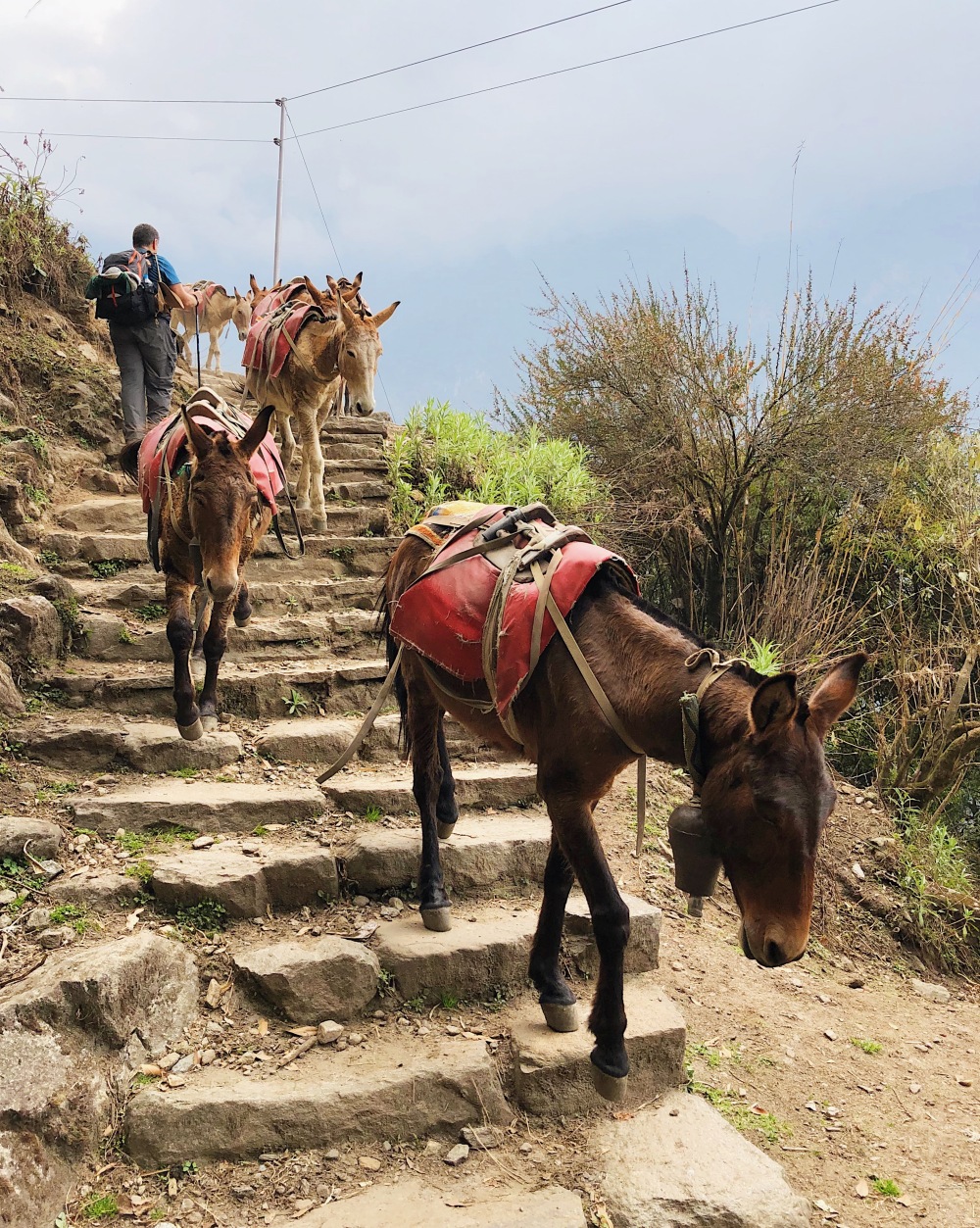
IMPORTANT NOTE: We were advised to trek really early the next day so we could reach MBC at around 10 AM. It is said that the area is more prone to avalanches after 10 AM.
Day 3 (Himalaya – Deurali – Machhapuchre Base Camp)
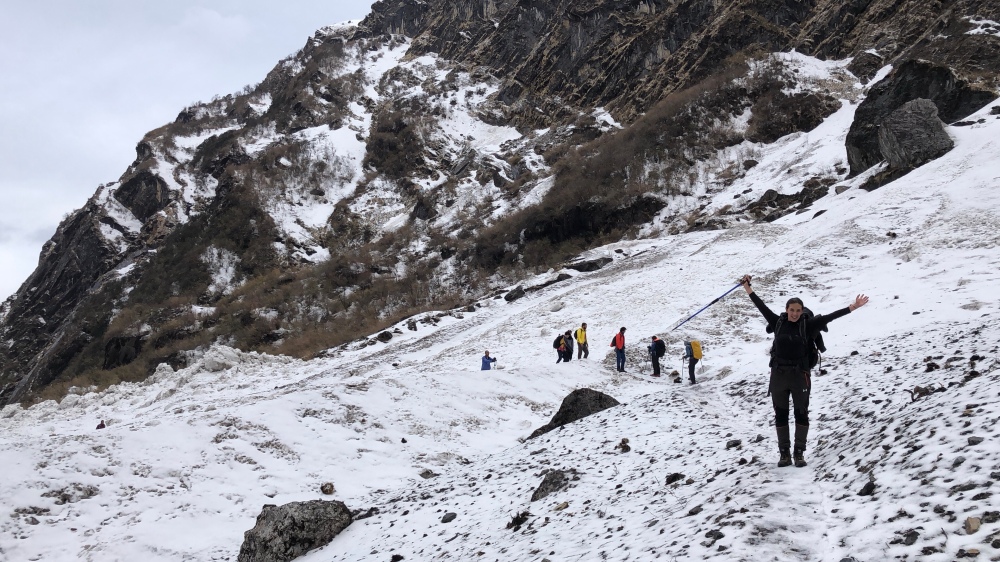
This is the most challenging trail of the entire ABC trek for me. As I have said earlier in my introduction to this travel guide, the trail from Himalaya to Deurali wasn’t as defined as the previous trails. Mud was already mixed with snow, and some pathways were not really obvious. It took us about two hours going up to Deurali. After resting for quite some time, we then proceeded to Machhapuchre Base Camp.
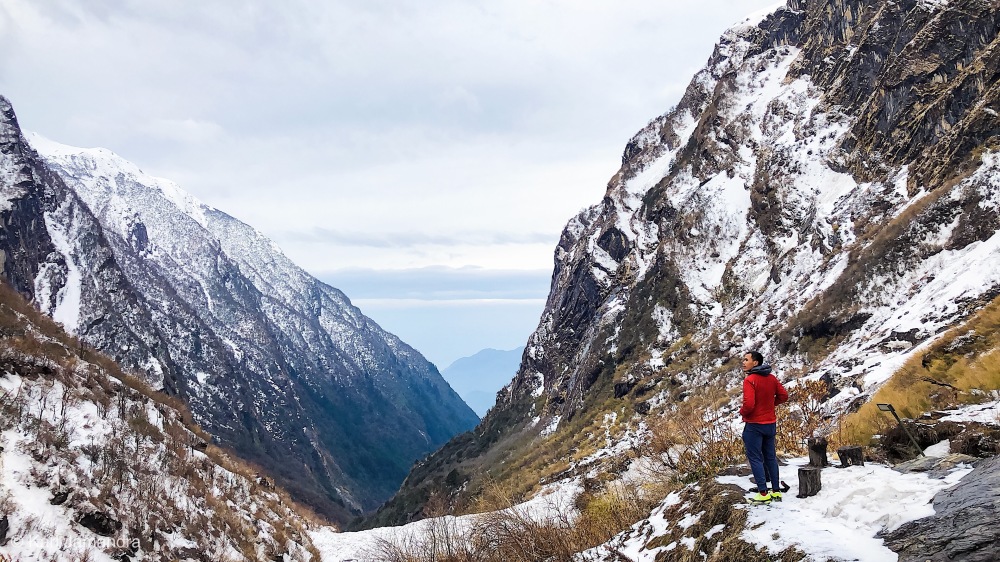
Now, this one’s the most dangerous trail for me as this area is prone to avalanches. The entire trail was covered with snow (save perhaps for the two metal bridges crossing the river) and bounded by snow-covered mountains. I was anxious the entire time! But even though worried, I continued with a brave face and unrelenting heart and soul because I knew we would eventually get to MBC on time.

And thank God we did!
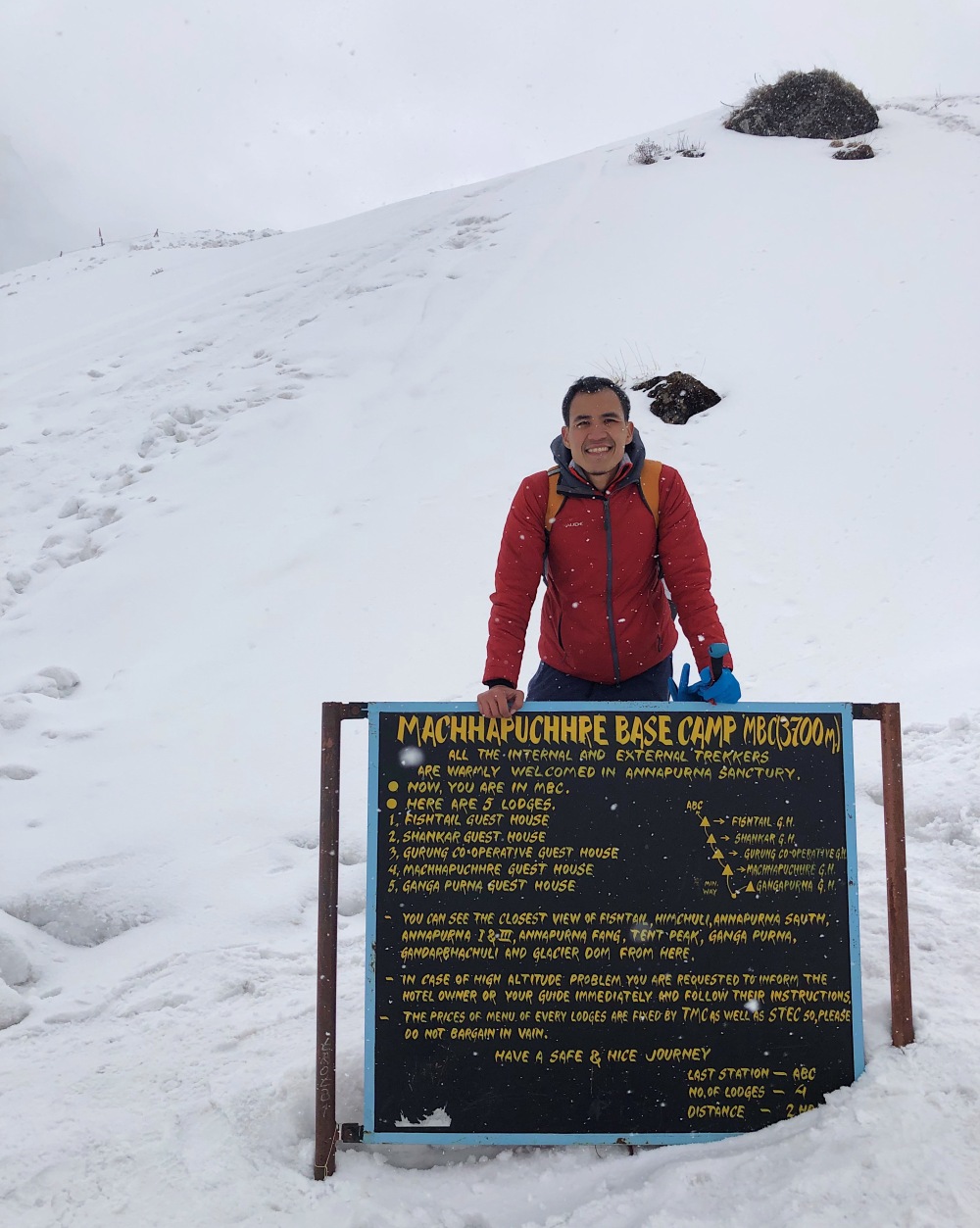
We didn’t trek during the afternoon of Day 3 because we didn’t deem it safe to go to ABC, especially that it was snowing! It wasn’t just snowing, it was snowing hard!
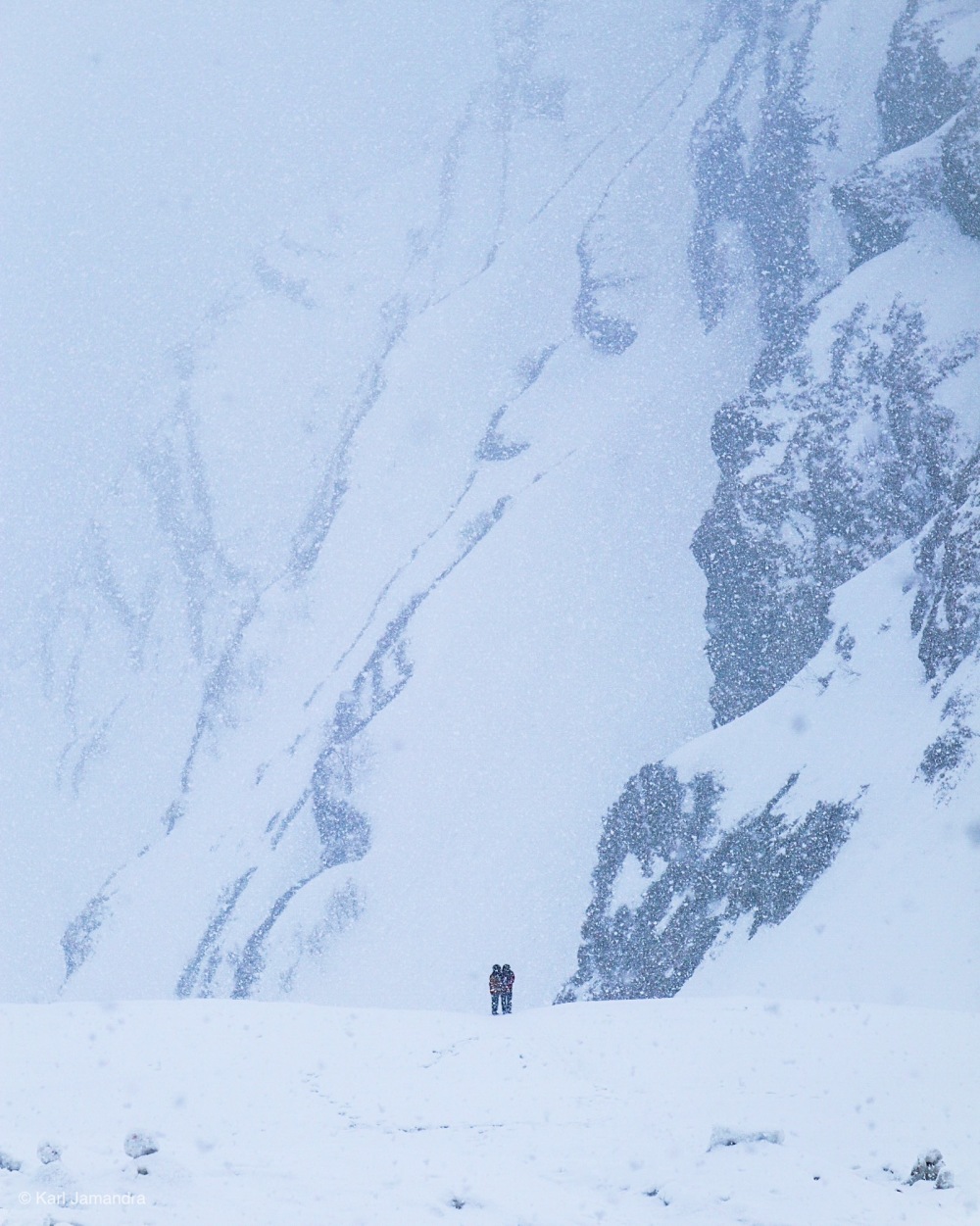
NOTE: With a height of 3,700 m, the Machhapuchre Base Camp is the highest place I’ve ever been able to sleep in. It was too cold during our whole stay here, from late morning to early morning the next day. Imagine how cold it was at night! I had to sleep with 4 clothes on to feel relatively warm. But believe me, even though I was covered with all that clothing and the comforter provided by the guesthouse, I was still feeling really cold! It also didn’t help that there was a blizzard during the wee hours of the morning! It was too cold to go out of the room and pee in the toilet during this time!
Day 4 (Machhapuchre Base Camp – Annapurna Base Camp – Machhapuchre Base Camp – Deurali – Himalaya – Dovan)
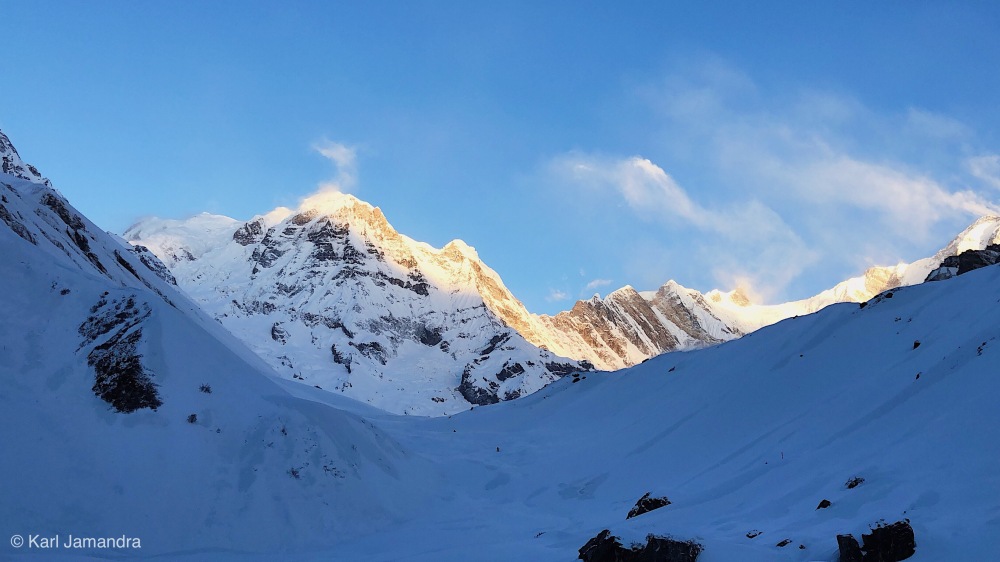
This was the day we were waiting for! We woke up very early again to prepare ourselves for the final trail heading to our goal, the Annapurna Base Camp! As soon as the sun rose up, we headed towards the ABC. The trail seemed easy, but it really wasn’t. Due to the thick snow covering the land, our feet tend to slush inside the snowy trail for about a foot or two! But we eventually reached ABC, and it was a great feeling! Reaching it was a testament of great perseverance, and I was just so proud of ourselves because we were able to bravely face some unbelievable challenges and finally achieved our dream destination in Nepal! We were already facing the Himalayas! It was a dream finally realizing in my very own eyes!
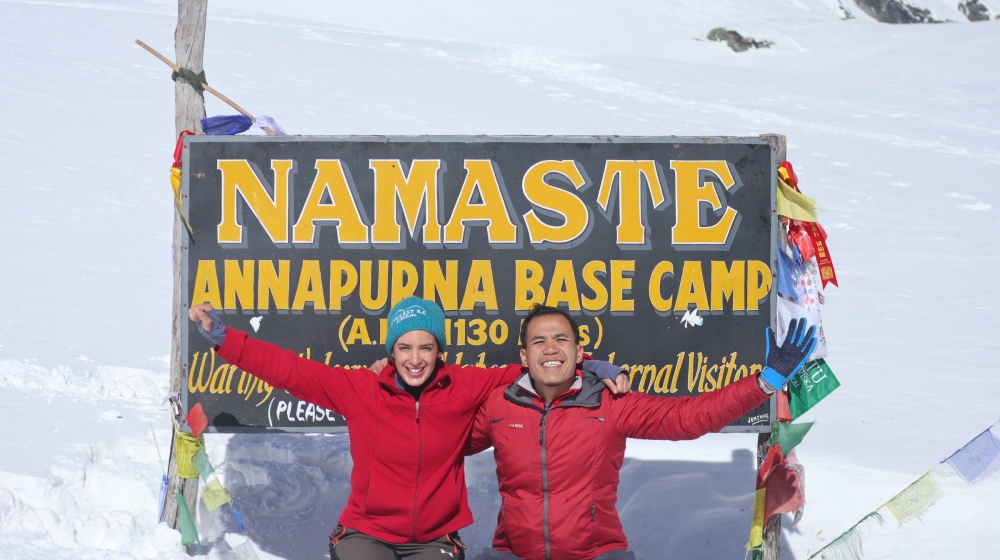
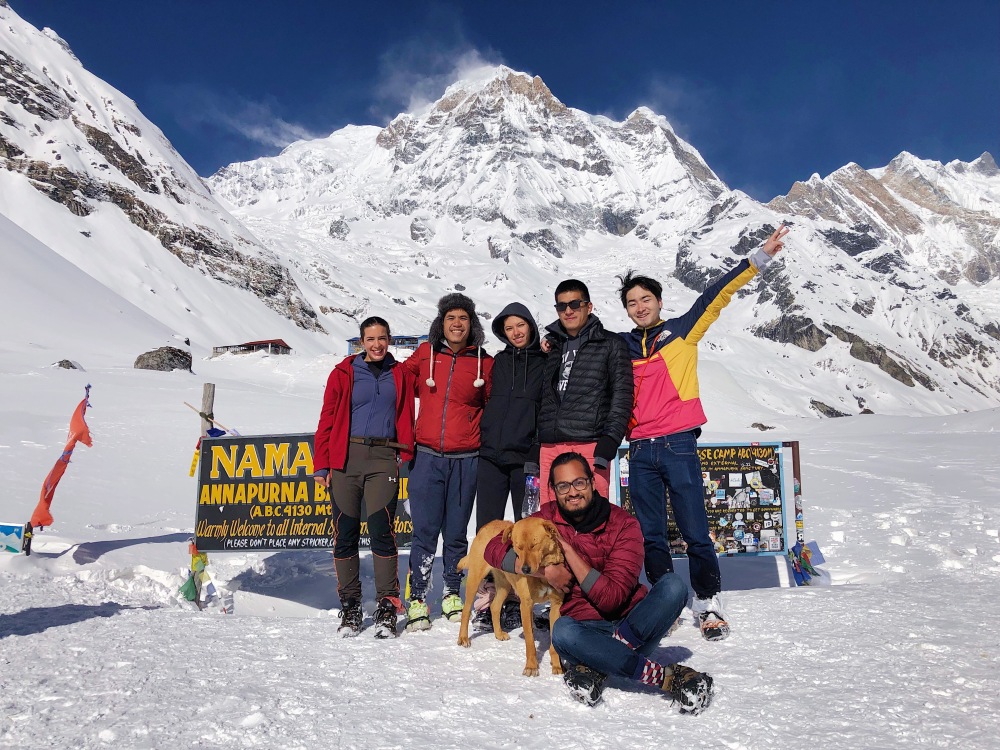
The trail going down was supposed to be easier, but it was not without its hardships. For one, we already reached Machhapuchre Base Camp at around 10:30 AM, which is past the 10 AM mark of caution. We immediately prepared our things and settled our bills then proceeded to head back to Deurali. But then, an avalanche occurred in the distance! We quickly consulted each other if we’re still going to continue despite of what has happened. We proceeded, and we proceeded with caution. It seemed like forever before reaching Deurali, but thankfully we safely did.
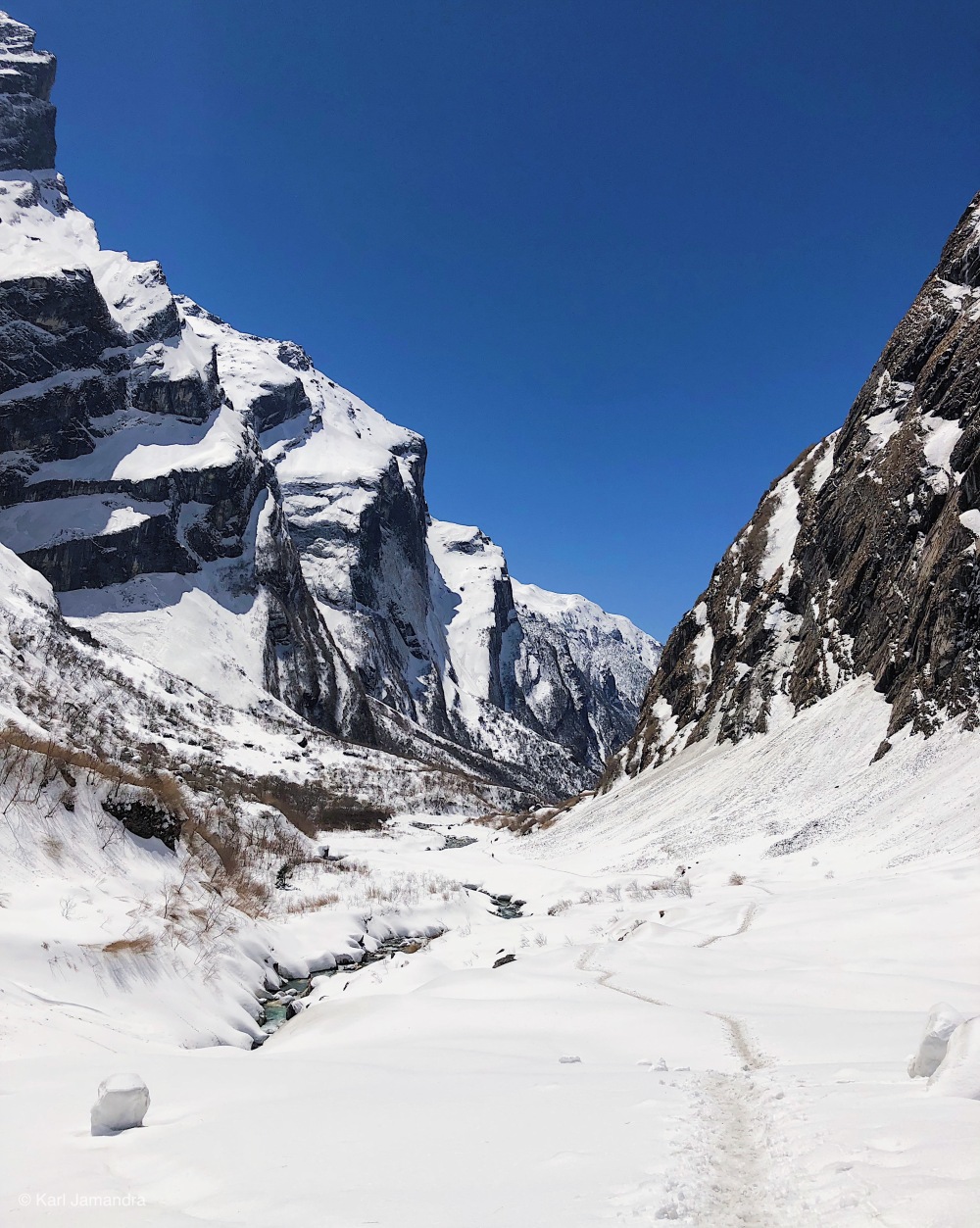
Thirty minutes after… two occurrences of avalanche happened along the trail near Deurali! Thank God we were already able to cross and reached the village safely!
We ate our lunch in Deurali for about an hour. Afterwards, we proceeded with the trail, heading first to Himalaya, where we encountered trekkers planning and preparing to go to ABC, before finally reaching Dovan, the perfect place to rest that day. It was already past 5 PM.
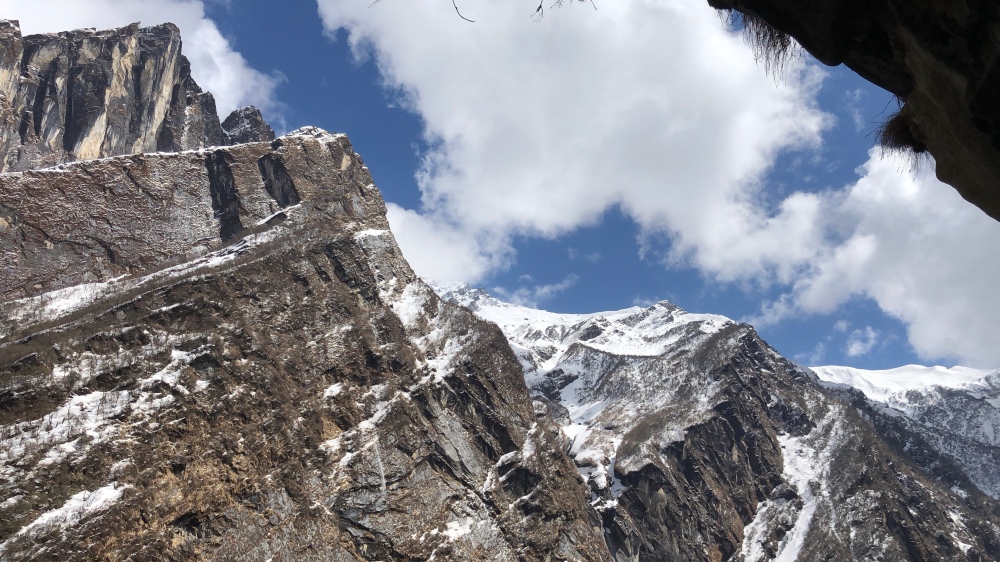
NOTE: We were already feeling body aches during this time of the trek. But it wasn’t the body ache that was really bothering me at this time, it was my sore eyes and sunburn on the face! Thank God, one of my friends had eye drops, which helped me get through the next day or two. More so, never underestimate the importance of sunblock and cap especially in the upper trails, so bring them aside from sunglasses!
Day 5 (Dovan – Bamboo – Upper Sinuwa – Lower Sinuwa – Chhomrong – Jhinu)
The good stay we had in Dovan was necessary before embarking on our journey during Day 5. We started our trek at around 9 AM. The trail going back to Bamboo was relatively easy. It has trees at the sides that provided shade whenever we needed to pause and rest for a while. Going to Upper and Lower Sinuwa was a bit harder due to repeated ups and downs of the trail. But the most difficult part of this leg of the trek is going up to Chhomrong, where thousands of steps are expected.
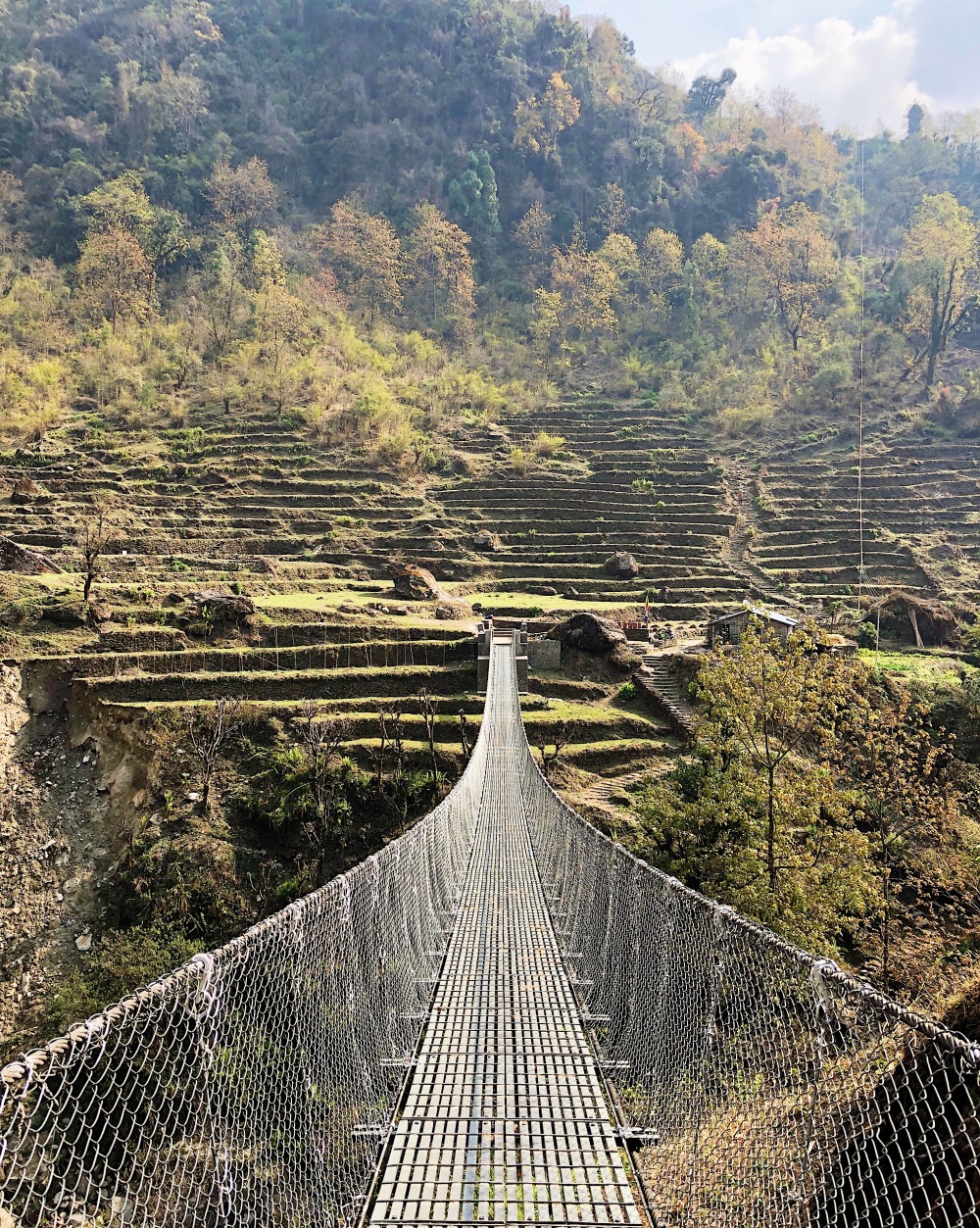
We stopped by the “tourist lookout” again in Chhomrong before heading down, down and down to Jhinu. We finally reached Jhinu at past 5 in the afternoon. And guess what, we went to its hot springs and enjoyed ourselves there for a time!

NOTE: If you have time to spare, don’t miss bathing in Jhinu’s hot springs, okay? Promise, you won’t regret it! Imagine treating your body to a relaxing warm bath in natural hot springs. Ohh, I can just feel doing it again!
Day 6 (Jhinu – New Bridge – Matkyu – Bus Stop near Ghandruk – Pokhara)
Definitely the easiest part of the ABC trek was the last leg. After eating breakfast and settling our bills in Jhinu, we proceeded to go to New Bridge. We passed by the long hanging bridge again, and we saw again some of the people living in the area. After resting for a bit in New Bridge, we then made our way to Matkyu. The trail here was a combination of stony pathways of New Bridge and the sandy, still-being-constructed road leading to Matkyu.
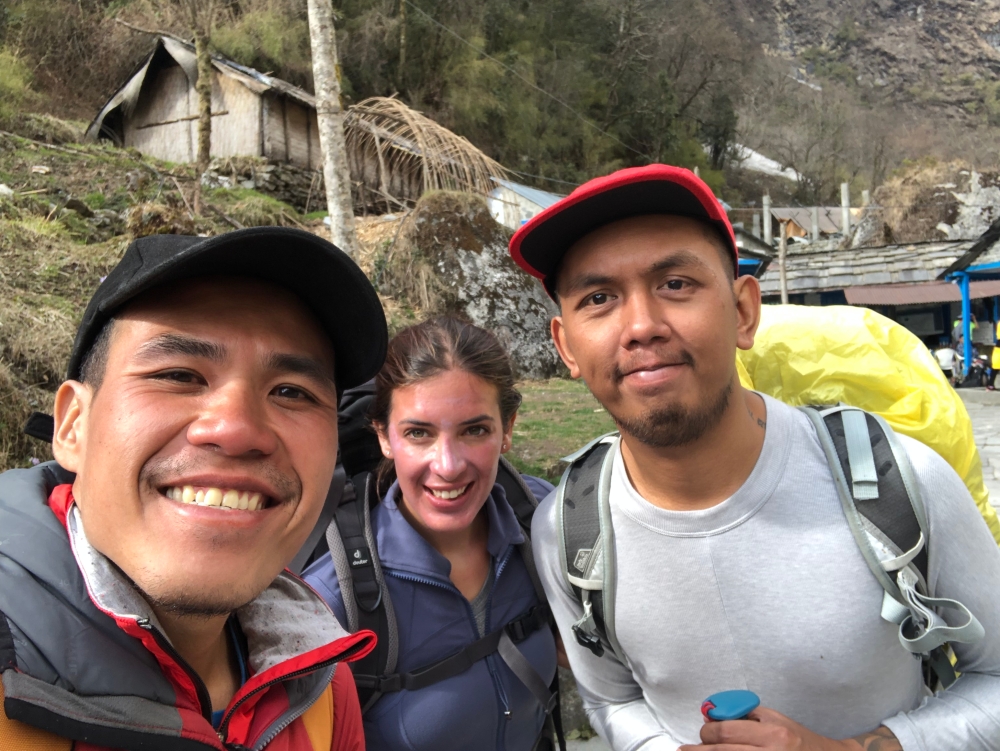
We were expecting a bus enroute to Pokhara in Matkyu, but due to the construction of roads, we had to ride a cab going to a bus stop near Ghandruk. We ate our lunch in the nearby eatery and waited for about an hour in the bus stop, before finally boarding the bus that would eventually lead us to Pokhara. City again at last!
***
BUDGET
Let’s talk about budget for a short while. Trekking the ABC is not that expensive, but it also is not cheap. Not counting the airfare to and from Kathmandu (P7,000+ for a one-way trip), a budget of P30,000 would probably be enough for a backpacking adventure in Nepal. I won’t be able to specify each of the expenses that we’ve had in Nepal, but let me give you an idea on where your expenses will go during your travel here.
Key expenses to remember are the following:
- Nepal VISA – issued upon arrival at the airport – $40 (about P2,100)
- Trekkers’ Information and Management System (TIMS) – 2,000 Nepalese Rupees or NPR (around P950)
- Annapurna Conservation Area Project (ACAP) – 3,000 NPR (around P1400)
- Taxi (from airport to Nepal Tourism Board office/ hostel to bus terminal) – Around P150 to P200
- Bus from/to Kathmandu to/from Pokhara – Around P600 one-way
- Bus from/to Pokhara to/from Ghandruk – Around P350 one-way
- Hostels in Kathmandu and Pokhara – Around P500 to P1000 per night
- Guesthouses along the ABC trail – P200 to P250 per night
- Meals in Kathmandu and Pokhara – P150 to P250 per meal
- Meals in the guesthouses along the ABC trail – P150 to P300 per meal
- Water refill in the guesthouses along the ABC trail – ranges from P100 to P200 for a water jug refill; the higher the village, the higher the water costs
- Additional expenses – this may include trekking poles (you can rent one for P750), crampons (you can purchase one for about P1,200), trekking gloves (better to bring a pair to save up),
- Souvenirs – ref magnets can range from P100 to P150 per piece; other options include pashmina, key chains, Himalayan salt, tea and coffee
***
Thank you for spending time to read this travel guide in the Annapurna Base Camp! I hope I was able to inspire you to go here, with all the tips, suggestions and comments I’ve shared re: the whole journey. Tell me what you think about this post, especially if I can do something more to make it better. Thank you!
Congratulations Karl anak! God bless you always!
LikeLiked by 1 person
Thank you po uli, Pa! God bless po! 🙏🏻😊
LikeLike
Nice adventure karl anak!
LikeLiked by 1 person
Yes po, Pa! Thanks po! 😊
LikeLike